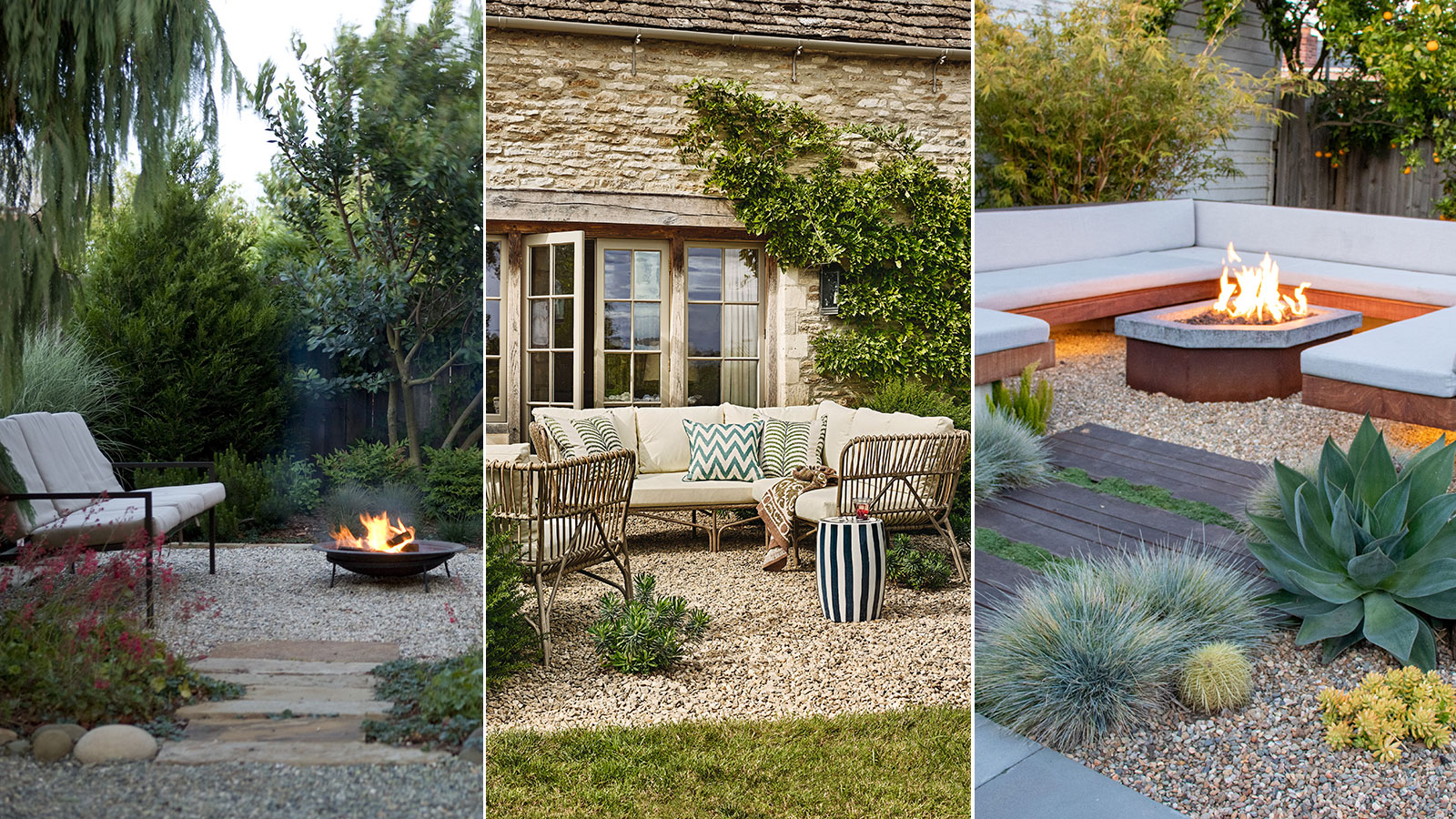
Affordable, easy to maintain and beautiful, gravel patios are ideal for adding a laidback seating area to your yard. A long-standing favorite with garden designers, gravel has a tactile charm all of its own.
Made up of small, rounded stones and crushed rock, this landscaping material is readily available, inexpensive, easy to work with and lends itself to many different patio ideas. It also has a satisfying crunch underfoot, plus practical benefits when it comes to retaining moisture, suppressing weed growth and helping to unify awkward or irregularly shaped areas of the garden.
Another important factor is that gravel is highly effective for establishing firebreaks. ‘Gravel is always useful in fire-prone and dry areas, especially in planting beds abutting a home,’ says Elliot Kaplan, owner and founder of Wildwood Landscapes. ‘In these areas it’s important to keep combustible materials away from the side of a house.’
12 gravel patio ideas to transform your backyard
Whether you have a small patio that needs a refresh or you want to design a new patio from scratch, there are plenty of ways to incorporate gravel in your design. These latest gravel patio ideas, along with insight from leading landscape designers, will give you all the inspiration you need.
1. Go for a relaxed, traditional look
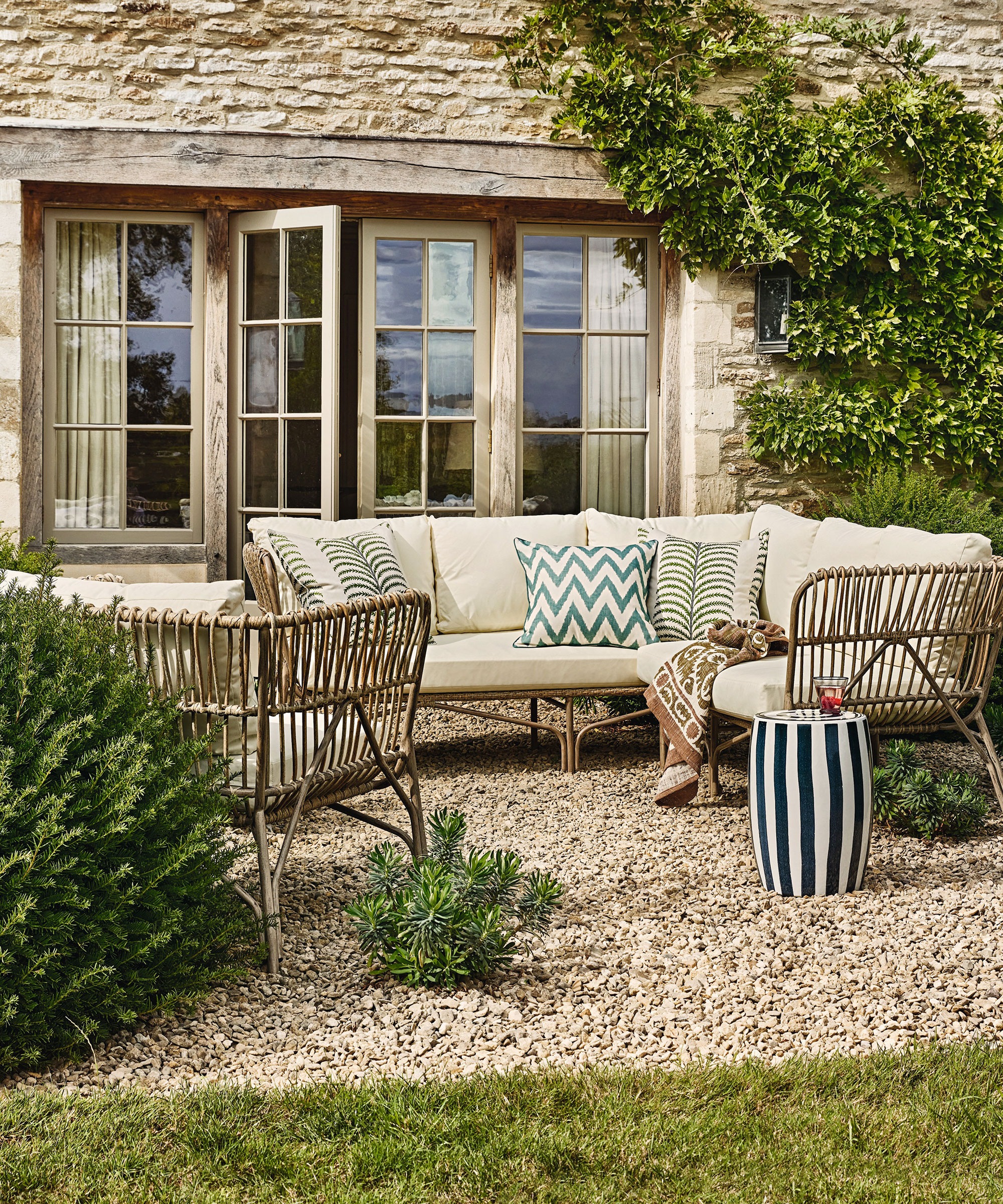
If you're not convinced that gravel is a welcoming and practical choice for a patio seating area, then think again. Providing a warm and tactile alternative to hard paving, this mass of tiny stones is great for unifying irregularly shaped plots and awkward multi-level yards.
What's more, the texture and colors of gravel will beautifully complement the natural tones of other hard materials in your yard, such as stone walls and rattan furniture. For fans of timeless cottage patio styles, gravel is a classic choice underfoot.
2. Or keep your gravel patio sleek and modern
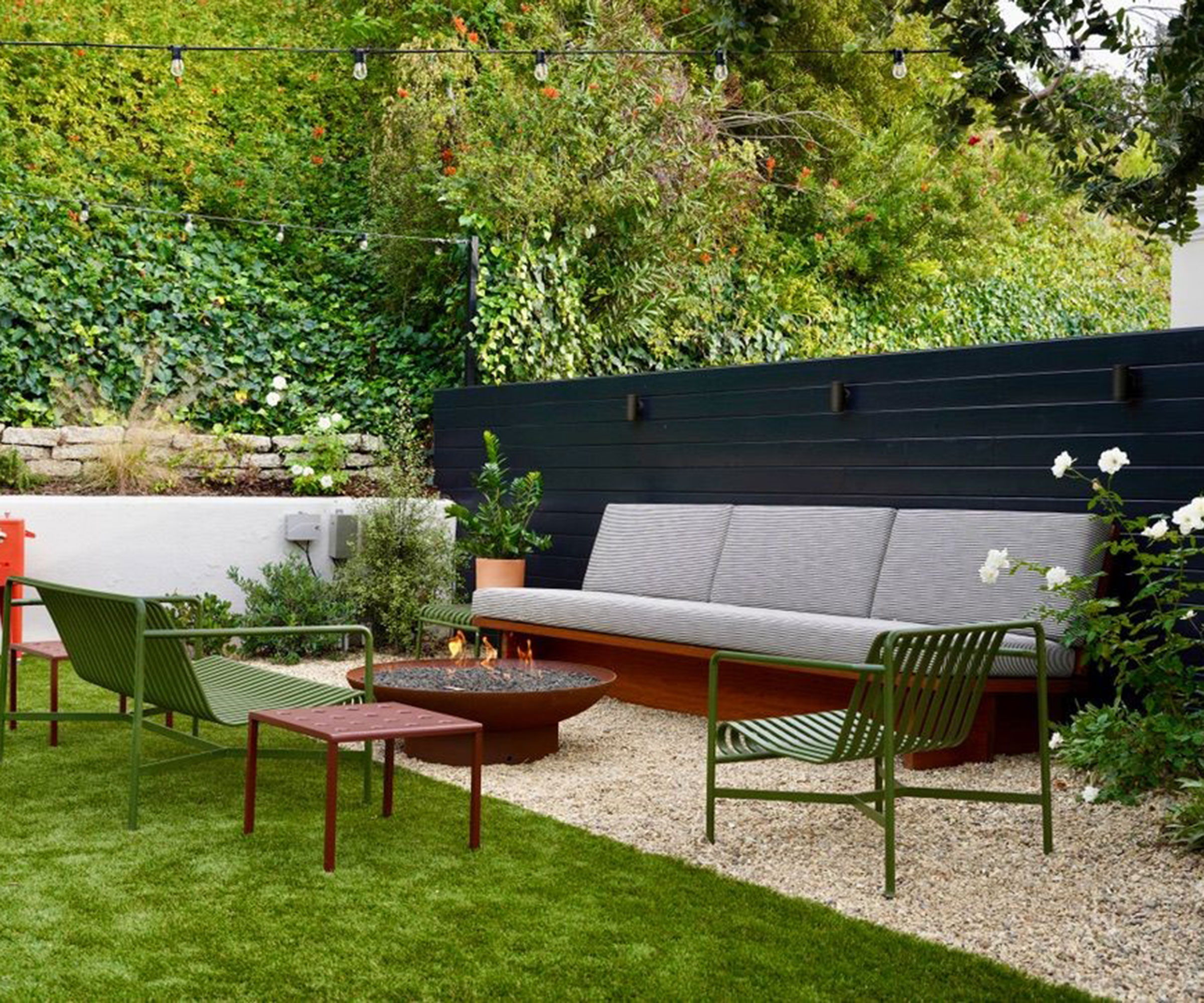
Gravel patios can also work just as well for a more modern backyard design too. By keeping to clean, straight lines, it instantly introduces a more sleek aesthetic. To keep the gravel in place, however, you will also need to consider some sort of garden edging if you want to retain those sharp lines.
‘The use of gravel and pebbles in a yard design lends a unique natural element to the garden, while being applicable for so many areas such as planters, pathways, patios, etc,’ says Kate and Ryan Gross, owners of Kate Anne Design. ‘The warm or cool tones of the gravel and pebbles provide a gentle contrast to the plantings, which help make the plants "pop" against their background.’
When it comes to making gravel more practical there are a few rules to abide by when it's used as patio flooring. ‘While we like to work with many different types of gravel and pebbles, we try to use a softer pebble when possible as it's much more comfortable to walk on,' say Kate and Ryan. 'We typically use a 3/8" size and Mexican pebbles are our favorite when feasible. When we're using gravel or pebbles in a setting that will be walked on, we like to also add some kind of road base or decomposed granite (with stabilizer) below the pebbles so it's easier to walk on and prevents the "moon walk" effect as you stroll through your garden.’
3. Use gravel to help conserve water
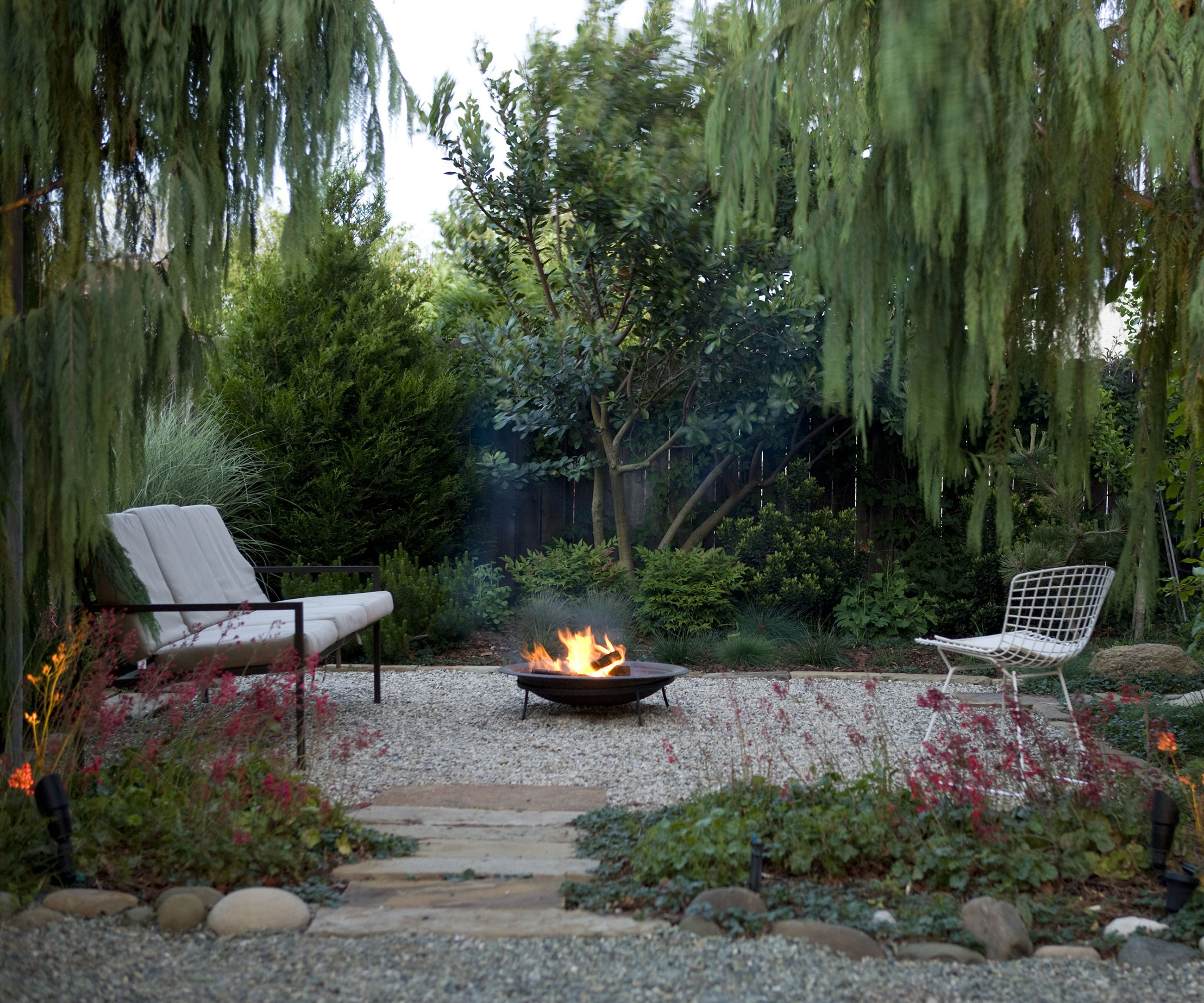
Not purely aesthetic, gravel patios can have many practical qualities too, especially in locations that are prone to a wide range of weather conditions. Highly permeable it is a great patio material for areas prone to sudden downpours as the water can be channelled through the stones and directly into the ground below, helping to avoid flash flooding and urban runoff. The same layer of stones is also great for slowing evaporation, allowing the soil to remain moist for longer, nourishing and encouraging strong, healthy root growth.
California-based landscape architect Lane Goodkind is passionate about native planting and working in harmony with the local landscape. Gravel and crushed rock play a regular role in his landscaping ideas.
In the Greenhouse project, he explains, ‘Most of the materials, with the exception of the gravel, were salvaged from on site or other nearby projects. The garden survives on a few hours of irrigation a month during the summer. All the downspouts were removed and replaced with rain chains and all impervious surfaces fragmented to allow permeability. With multi-layered plantings the garden acts as a giant sponge, soaking up rainfall.’
4. Replace a lawn with a gravel patio

Replacing a struggling lawn with a gravel patio is always a win. Saving time and effort from trying to get grass to grow, you can instead kick back and spend quality time with friends. Plus, by opting for a no-grass backyard idea like this you can enjoy a smart rather than tatty outlook.
Often the success of a gravel patio depends on the materials chosen for both edging and covering the area. Finding the right combination for your needs and the location can play a large part in how much future maintenance the space will need.
Fine crushed gravel has little of the reassuring ‘crunch’ that pea shingle offers, but instead it compacts over time, forming a stable surface for walking over and placing furniture on. Its irregular appearance lends itself to a relaxed, rustic style so it works perfectly with a secluded setting, like this pretty wildlife garden complete with unique bug hotel outdoor bench.
5. Team informal gravel with coastal patio planting

Bleached timbers, smooth rounded pebbles and sparse pockets of airy patio planting are the perfect additions to a gravel patio. Informal and laid back in design, it doesn’t take much of these simple ingredients to give a shingle-covered seating area an unmistakable and dreamy coastal feel.
Opt for an amber and white gravel mix such as Rhinegold, California Gold or Copper Canyon for an uplifting finish and edge with untreated timber battens in larch, oak or eucalyptus. Alternatively, a metal edging like this Corten steel style pictured, will give it a crisper, more modern finish.
Coastal plants with silver, waxy and leathery needle-like leaves are well adapted to the harsh, salty conditions of oceanside living, and will give any yard that distinctive coastal feel. Eryngium, sea kale, thrift and vibrant bottlebrush are all firm favorites and need little attention. Add in some sun-loving elegant grasses that move with the breeze to complete the look.
6. Choose the right type of gravel for entertaining areas
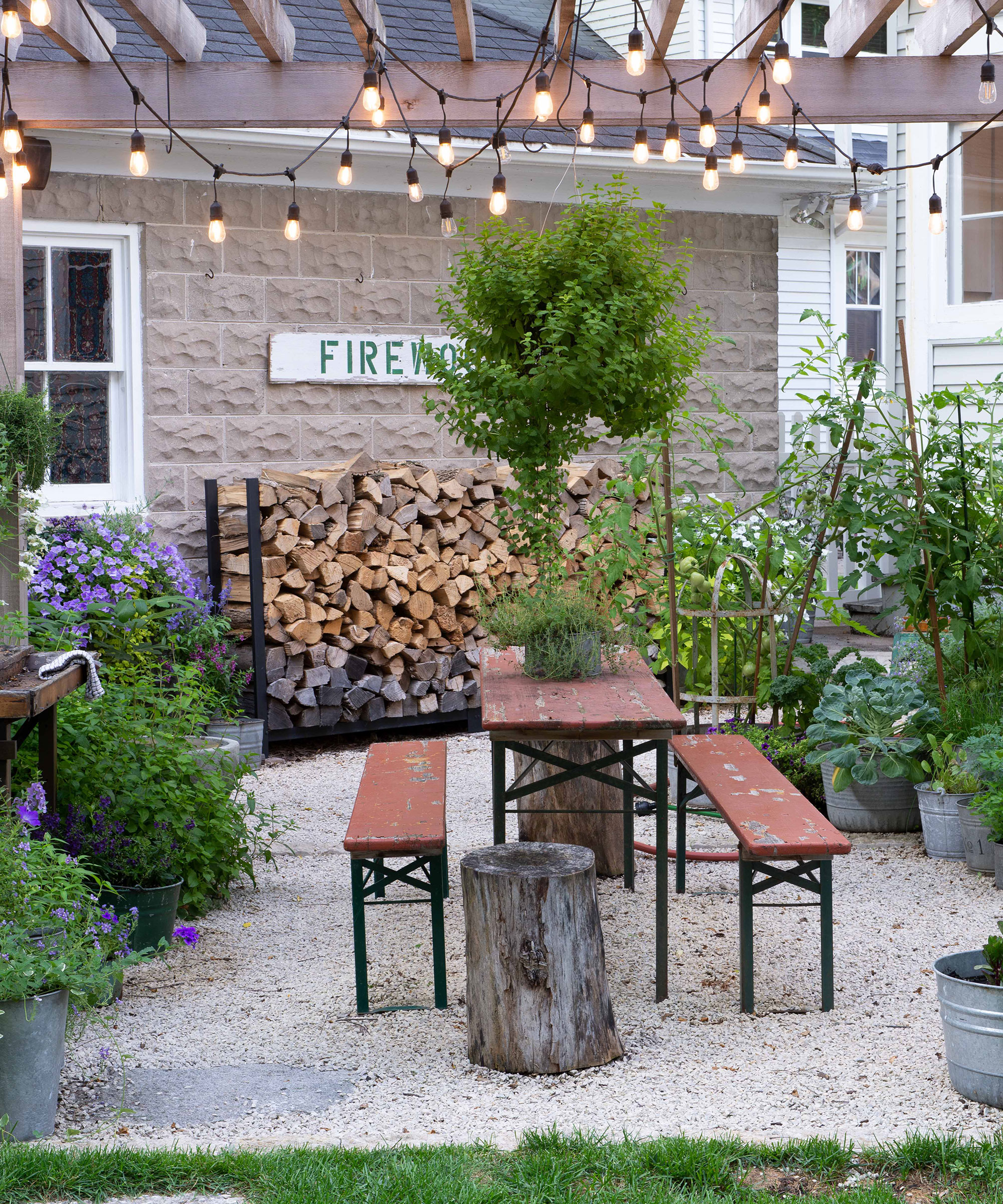
When it comes to selecting the ideal aggregate for laying your patio don’t just go for looks alone. ‘Gravel can be a cost-effective alternative to common paving options like concrete, brick or stone pavers,’ says Jim Drzewiecki, principal at Gingko Leaf Studio. ‘As a paving material, it can create a more casual feeling for an outdoor space. With many types and colors to choose from, the size of the gravel pieces should also be considered based on how the space will be used.
‘Think about if you plan to use outdoor furniture on the gravel patio, and if the furniture will be somewhat permanent in its location like a dining set, or if it will be moved often like the chairs around a fire pit,' he adds. 'Flat shaped or jagged pieces of gravel will compact better providing a more solid surface with which to drag patio furniture on versus smaller, rounder pieces. Pea gravel, as an example, can feel like walking on quicksand.'
7. Use a gravel patio to expand your plot

Thanks to its easy-going nature, gravel has the ability to visually stretch areas, a useful quality when designing small backyards. With minimal preparation, this aggregate can cover the ground right up to the boundaries, under mature shrubs, trees and around fixed features, ironing out undulations and creating a seamless surface that unifies and enlarges the perceived space.
This design technique to make a patio look bigger was used by Steve Ritchey, designer at Seed Studio Landscape Design, in a chic, urban project in San Francisco, California. ‘Working with keeping the existing stone paving in the side yard, the challenge here was to create a counterpoint to the hardscaped surfaces that still invited people out to use the space. I chose gravel as a surface material to soften the area and give a sense of a more natural vibe to the rear yard area. By using gravel here, we eliminated additional lines and edges that would have made the space feel less expansive, and visually allowing the surface texture to extend out and under the patio plants in all directions.’
8. Throw gravel into contrast
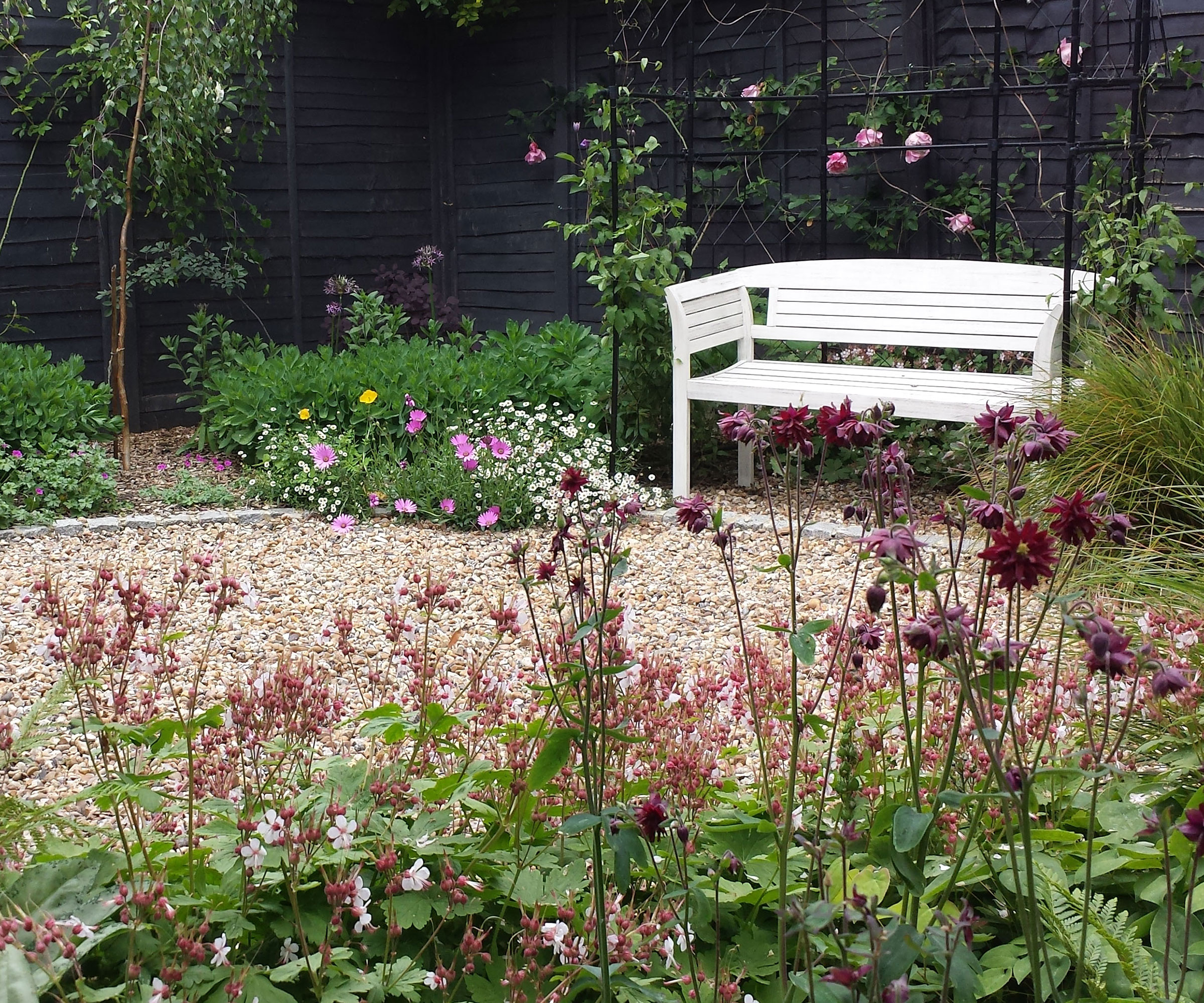
Make gravel the star of the show – or patio – by teaming it with dark, moody structures, boundaries and textural, open planting. Opting for a pale mix of stones such as golden or oyster gravel immediately helps reflect light around a smaller, shady area, but surrounding it with dark painted walls or garden fencing will instantly intensify the effect.
In this romantic, yet undeniably chic and modern seating area, designers Jo Fenton and Anne Roberts from Fenton Roberts have given humble gravel a sophisticated makeover. 'A gravel area will need a retaining edge in order to define it and prevent the stones escaping into other areas,' explains Jo. 'In this garden we used granite setts but we also like flexible metal edging which is versatile and very easy to install.'
9. Lay gravel for a seamless connection between zones
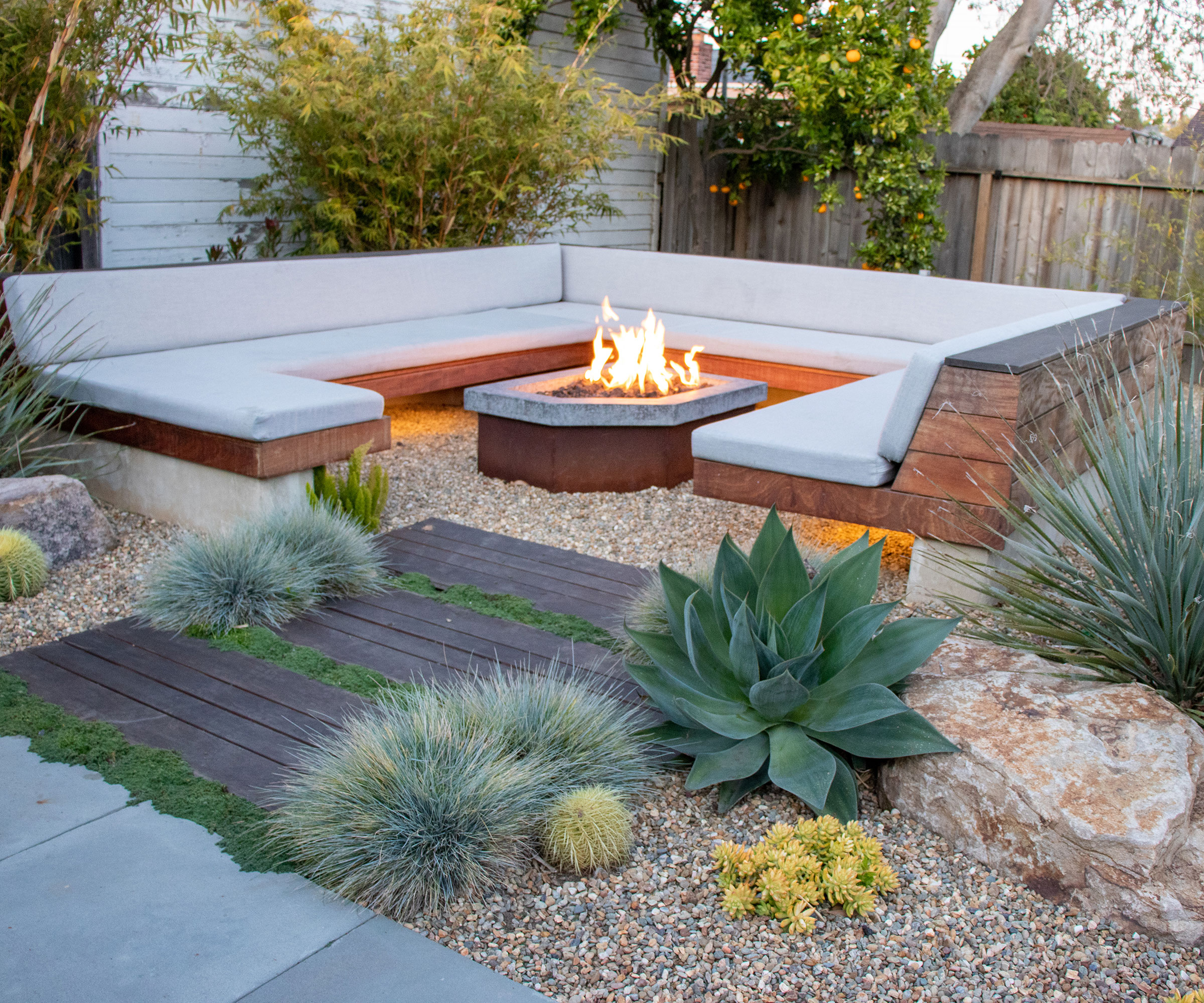
The free-flowing nature of gravel is a huge bonus when it comes to creating garden walkways and patio areas in a yard. Especially if the layout or site is unconventional in shape or levels. Being able to rake it into hard-to-reach areas or around immovable features such as mature plants or boulders is quick, easy and looks so much smarter than cutting and laying paving in such conditions.
‘Walkability is a great advantage to using gravel mulch throughout a landscaped garden,’ says Elliot Kaplan of Wildwood. ‘Suddenly the space becomes more open, walkable, and connected to the existing hardscapes of an outdoor space. Wood mulch, conversely, often highlights the separation between the more walkable/human space and planted space.’
Another bonus of these tiny, rounded pebbles is that they have a tactile, charm of their own. ‘Gravel can be a feature in itself, allowing less dense plantings to showcase plantings specimens,’ continues Elliot. ‘We like to use living ground cover plants more sparingly, often around steppers or other horizontal features while allowing more “breathing room” between plantings to display their unique form. In line with the dry garden theme, gravel works elegantly when landscaping with rocks and in more modern gardens that feature a less dense and more angular planting layout.’
10. Combine gravel and pavers in a patio design
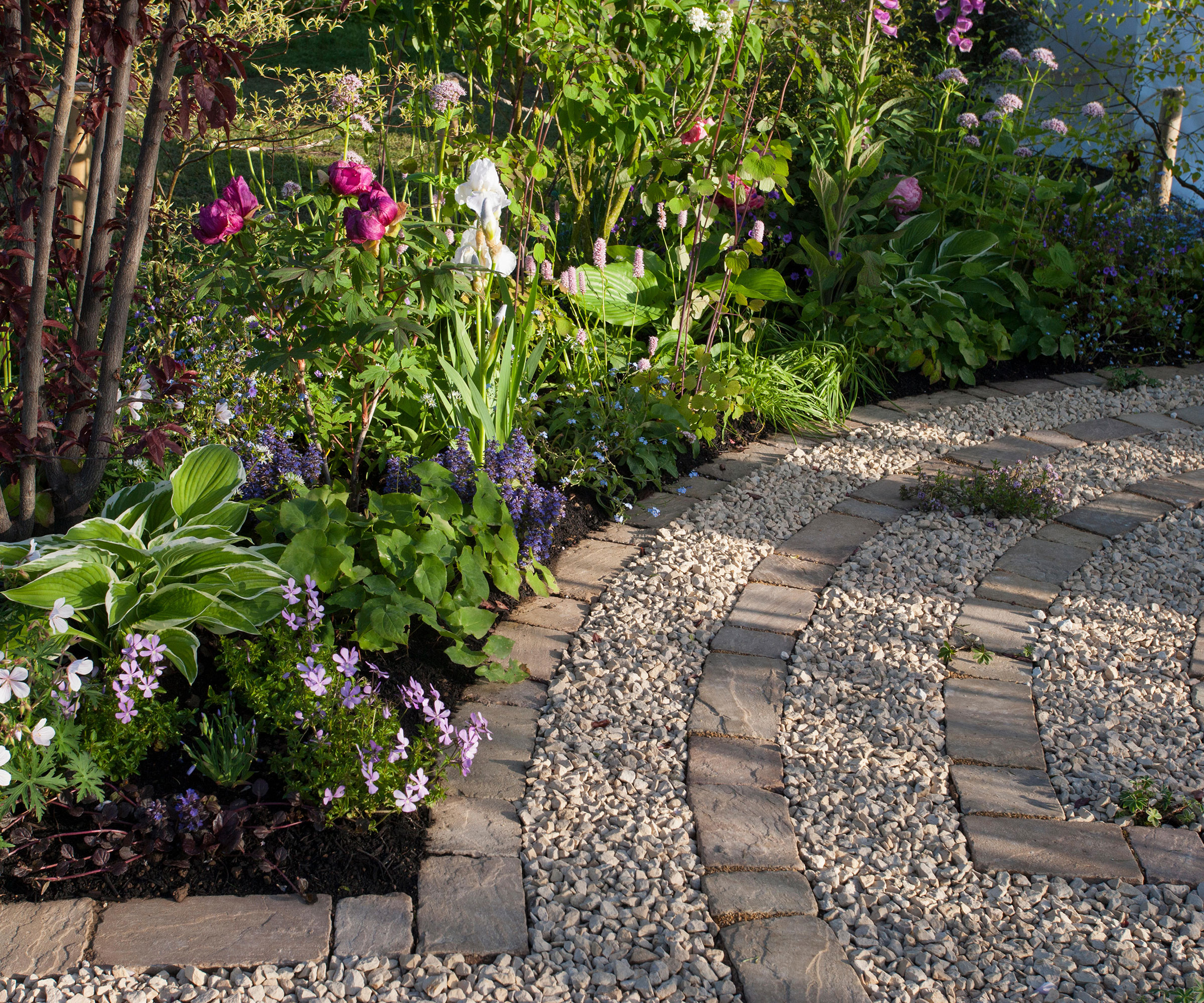
Looking to give your yard a decorative touch? Try mixing brick pavers with gravel. By using these small stone, clay or concrete blocks to draw lines, concentric circles and curves you can bring pattern and texture to the seating area all while keeping gravel in place.
For a smart and classy finish, choose stones and blocks of similar tone to create a patio that is uniform in color, and where the emphasis is firmly on the pattern and contrasting textures.
To avoid making any patio mistakes, it's essential to prepare the space properly before laying your chosen materials. Get started by marking out the patio and digging down at least 5 inches. Edge the area with your chosen material, compact the base before adding a layer of Type 1 MOT – this could be a mix of crushed gritstone, limestone, basalt or granite. Top this layer with landscaping fabric before laying out the block pavers and infilling with gravel.
11. Make gravel your main landscaping material
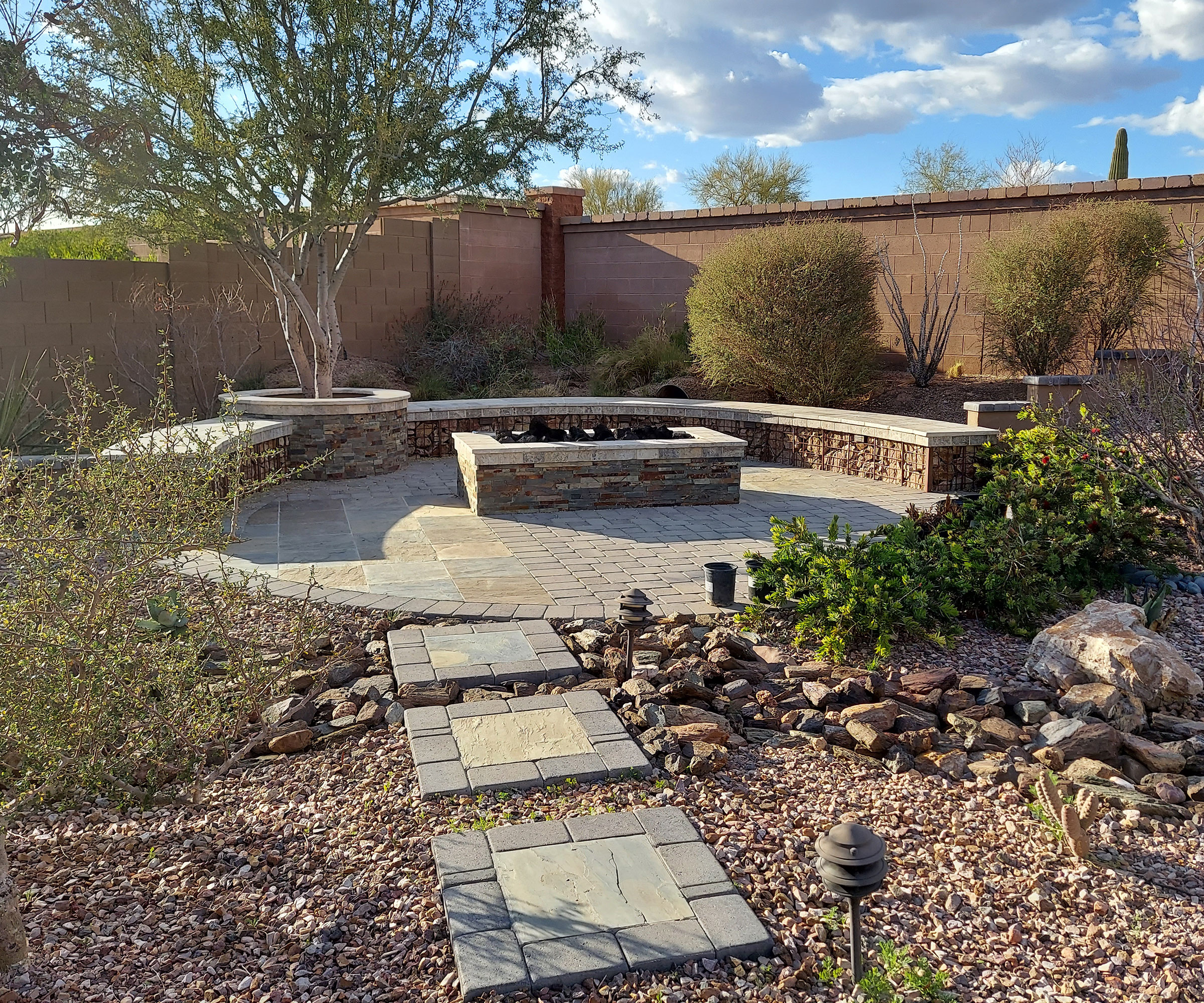
Covering an area of ground with gravel will have a big impact on the look and feel of your space, so do choose your color carefully when designing a gravel garden or patio. ‘Choose the color of the gravel to coordinate with other elements in your landscape like adjacent paving, or even the color of your home,’ suggests James M. Drzewiecki. An instant way to pull a design together and create a professional finish, you can even match the stone shade with favorite blooms, foliage or to highlight striking tree bark.
When it comes to edging, it’s well worth considering the color and style of a variety of options. ‘The gravel can be retained with a simple metal edge (aluminum, steel or corten) or at a higher price point, brick or stone cobbles may be used. The latter may lend a more rustic feel to the space,’ says James.
‘Gravel can also be used as a decorative accent replacing wood mulch in flower beds that are adjacent to paved areas. Do be aware that on hot, sunny days the gravel used as mulch will heat up and radiate that heat onto nearby plants.’
12. Keep it light and white
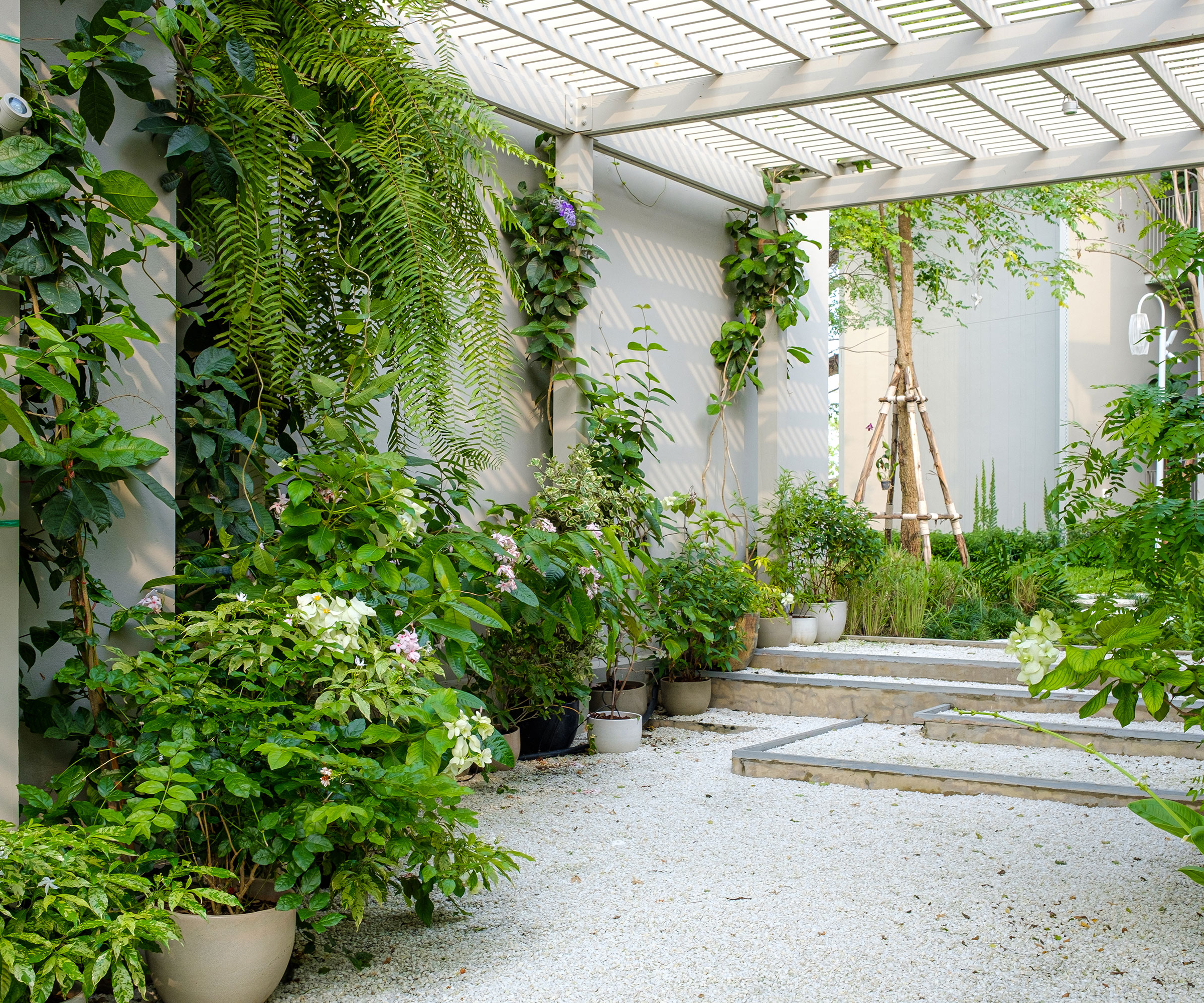
If you want to give a dingy seating area a lift, then you can’t beat a dash of light reflecting white for an instant refresh. White gravel is not only inexpensive and easy to lay, but it will help to visually enlarge the space and bounce what little natural light there is around the space.
Team gravel in shades such as Arctic white, French white or Polar white with whitewashed masonry, trellis, fencing, or a painted patio cover such as a pergola, and you can accentuate the effect magnificently.
Keep the gravel in tip top condition by getting rid of weeds pronto and treating any grubby areas to a light hose down with a pressure washer – on a low power setting. A leaf blower on a low setting can also be useful for clearing any debris or loose leaves that have settled amongst the stones.
How do you prepare the ground for a gravel patio?
There’s no doubt that taking time and care when preparing the site for a gravel patio will pay dividends when enjoying life outside in the future. A good professional looking finish is also key if you want to make a patio look expensive.
‘To prepare the ground for a gravel patio, you will want to start by removing any weeds or other vegetation, any debris such as leaves or sticks, and anything else that would prevent a level surface, such as stones or tree stumps,' says experienced New York City landscape designer Amber Freda. 'Once everything has been cleared, you can use a steel rake to level the soil and fill in any low spots with top soil.’
Containing the volume of stones needs careful attention and Amber advises using metal edging to frame the gravel area. ‘This helps prevent gravel from mixing with adjacent patches of turf or garden beds, which can look messy over time. Next, you will want to put down weed barrier fabric to cover all the soil and prevent weeds from coming up, overlapping the pieces by several inches and securing them into the soil using garden staples. The last step will be to pour your gravel over the weed barrier and rake it out again to make sure it’s level.
'For a professional finish, any pieces of weed barrier fabric that can’t be covered with gravel can be cut out with a pair of sturdy scissors. I also recommend hosing down the gravel at the end to remove any sand or sediment that has coated the stones, which will result in a cleaner looking patio surface.’
How deep should a gravel patio be?
When it comes to constructing a gravelled seating area it’s important prepare the site thoroughly.
First, lay a compacted sub-base of compacted and levelled crushed stone around 5 inches deep. Then surround the entire area with your choice of edging, ensuring that it measures at least 1 inch above the total finished height of the patio. Finally, top the base with a 1 inch layer of your chosen decorative aggregate. Rake the stones evenly before popping furniture and accessories – such as fire pit or water bowl – in place.
Gravel patios can work well in both traditional and contemporary backyards, plus the wide range of material options available means it's an incredibly versatile choice that can work well with all garden color schemes.
Perhaps one of its biggest advantages, however, is that a gravel patio is relatively easy to lay on a DIY basis, so if you're worried about how much a new patio costs, this could be the ideal solution for keeping your project budget in check.







